On 6 May 1896, inventor Samuel Pierpoint Langley launched Aerodrome No.5, using a a spring-actuated catapult mounted on top of a houseboat on the Potomac River, near Quantico, Virginia. It made the first successful flight of an unpiloted, engine-driven, heavier-than-air craft of substantial size.
Yet Langley's career had been primarily as a physicist, astronomer, and was the third Secretary of the Smithsonian Institution. He also researched the relationship of solar phenomena to meteorology. It was only later in his life that had taken an active interest in aeronautics.
An article published in the Chautauquan (1906) provides an interesting biographical sketch of Samuel Pierpoint Langley over the span of his diverse and productive career.

On 6 May 1937, in a well-remembered disaster, The Hindenburg airship burned while landing. Today's book pick is: The Golden Age of the Great Passenger Airships: Graf Zeppelin and Hindenburg, by Harold G. Dick, published by Smithsonian Books. The author was Harold Dick was the American representative (1934-38) in Germany of the Goodyear-Zeppelin joint venture. With extensive photographs, data, and manuals, collected while there, the author was able to draw from an extraordinary accumulation of material to a first-hand account of the two great passenger Zeppelins.
It is available from Amazon, typically about New from $26.01. Used from $3.91. (As of earlier time of writing - subject to change.)
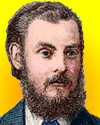 | Hypotheses like professors, when they are seen not to work any longer in the laboratory, should disappear. |
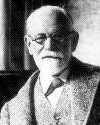 | No, our science is no illusion. But an illusion it would be to suppose that what science cannot give us we can get elsewhere. |
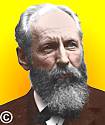 | The conflict of theories, leading, as it eventually must, to the survival of the fittest, is advantageous. |
| Before you look at today's web page, see if you can answer some of these questions about the events that happened on this day. Some of the names are very familiar. Others will likely stump you. Tickle your curiosity with these questions, then check your answers on today's web page. | |
| Births | |
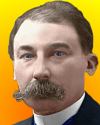 | If you’ve taken organic chemistry, you’ll have heard of this French chemist born 6 May 1871 who received a share of a Nobel Prize in 1912 for his development of the reaction known by his name. He prepared reagents by reacting magnesium with an organic halide in dry ether of the type RMgX which are versatile for use in the synthesis of a large number of different classes of compounds in organic chemistry. What is the name of this scientist? |
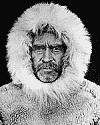 | Together with his black assistant Matthew Henson and four Inuit companions, this American explorer, born 6 May 1856, reached a point on the earth never attained before on 6 Apr 1909 - the North Pole. He also had discovered on an earlier expedition in northern Greenland discovered the largest meteorite. What is the name of this explorer? |
| Deaths | |
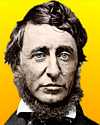 | This famous American author and naturalist (1817-62) was known as the "Hermit of Walden". He observed the natural history where he lived, keeping thorough journals. Many regard him as the father of the environmental movement. What is the name of this naturalist author? |
| Events | |
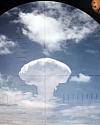 | In 1962, a nuclear ballistic missile with a live nuclear warhead was test-fired. It was aimed across the Pacific Ocean toward Christmas Island on a 12.5 minute, 1,200-mile flight which ended when the warhead exploded in the air at an altitude of over 10,000-ft. Was the missile fired from a U.S. state, an island base, a ship, a submarine, an aircraft or another platform? |
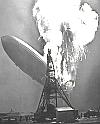 | In 1937, the crash of The Hindenburg disaster killed 36 people. The zeppelin carrying 61 crew and 36 passengers burst into flame while landing an American the naval air station. Onlookers were horrified, as the 7 million cubic feet of hydrogen which supported the dirigible exploded in a fireball that destroyed the ship in about a half a minute. In which U.S. state did The Hindenburg crash occur? |
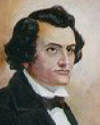 | In 1851, a U.S. patent was issued to John Gorrie for his invention of the first mechanical device of its kind, a forerunner of something now found in any modern house. What was John Gorries’s invention? |
Fast answers for the previous newsletter for May 5: The decade including the year 1981 • mercury-vapour lamp • plutonium • Alan Bartlett Shepherd, Jr. • Guilty! with a $100 fine that was overturned as excessive upon appeal, but the law remained on the books, though unenforced, until it was finally repealed decades later..
 If you enjoy this newsletter, the website, or wish to offer encouragement or ideas, please send feedback by using your mail reader Reply button.
If you enjoy this newsletter, the website, or wish to offer encouragement or ideas, please send feedback by using your mail reader Reply button. Your click on a Facebook, StumbleUpon, or other social button on the site webpages is also a welcome sign of appreciation. Thank you for using them.
© This newsletter is copyright 2020 by todayinsci.com. Please respect the Webmaster's wishes and do not put copies online of the Newsletter — or any Today in Science History webpage. (If you already have done so, please remove them. Thank you.) Offline use in education is encouraged such as a printout on a bulletin board, or projected for classroom viewing. Online, descriptive links to our pages are welcomed, as these will provide a reader with the most recent revisions, additions and/or corrections of a webpage. For any other copyright questions, please contact the Webmaster by using your mail reader Reply button.
--
If you do not want to receive any more newsletters, Unsubscribe
To update your preferences and to unsubscribe visit this link
Executive Real Estate Business Class
-
"It was like a man with wings. It wasn't like anything you'd see on TV or in a monster movie." ...
About the publisher
Search This Blog
Blog Archive
-
▼
2020
(1542)
-
▼
May
(194)
- FAMILY: Building kindness in a tough time
- What is history's biggest mystery?
- On This Day for May 31 - Adolf Eichmann hanged, Cl...
- Globalist Race War? because COVID Coup exposed? ...
- Newsletter for Sunday 31 May.
- May 31: Battle of Jutland, Earthquakes and the Clo...
- BREAKING NEWS: SpaceX launches new era of spacefli...
- The Compass: Spain
- On This Day for May 30 - Joan of Arc burned at the...
- Newsletter for Saturday 30 May.
- CORONAVIRUS SPECIAL EDITION: The best way to clean...
- May 30: Voltaire the Rebel
- This Week's Roundup Top Ten from History News Network
- On This Day for May 29 - Mount Everest summit reac...
- Newsletter for Friday 29 May.
- You & your loved ones can be Involuntarily Quarant...
- YOUR WEEKLY ESCAPE: The famous Viking warrior who ...
- May 29: Return of Charles II, Mt. Everest Knocked ...
- Alone Returns With a $1,000,000 Prize
- On This Day for May 28 - Amnesty International fou...
- The secular utilitarian U.N. New World Order has a...
- Newsletter for Thursday 28 May.
- May 28: Spanish Armada Sets Sail, The Indian Remov...
- SCIENCE: Restoring an American frontier
- Breaking News from History News Network
- On This Day for May 27 - Founding of St. Petersbur...
- Christian History Magazine: Covid-19 Response
- Newsletter for Wednesday 27 May.
- Learn whose pulling the strings what the media ha...
- May 27: Habeaus Corpus, Priam's Treasure and Dunkirk
- TRAVEL: Find the secrets to your backyard
- Journey with Ancient Explorers when you subscribe ...
- On This Day for May 26 - Martin Luther declared a ...
- Newsletter for Tuesday 26 May.
- May 26: Start of the Dow Jones Index, Middle Easte...
- HISTORY: The tumultuous past of the U.S. Postal Se...
- A Memorial Day Offer from Britannica!
- Grant Premieres Tonight!
- New This Week On History News Network
- On This Day for May 25 - U.S. Constitutional Conve...
- Economic Re-Opening is a Fakeout + CDC numbers rev...
- Newsletter for Monday 25 May.
- May 25: On This Day in History
- FAMILY: Moving past a big disappointment
- The real history behind WW2 film 'Greyhound' | Ann...
- On This Day for May 24 - Opening of the Brooklyn B...
- Newsletter for Sunday 24 May.
- Vaccine: 20 percent Serious Injury after skipping ...
- May 24: Methodism, Morse Code and the Bridge that ...
- The Compass: Argentina
- Your New Favorite Podcast
- On This Day for May 23 - Tibet annexed by China, C...
- Watch all the talks from BBC History Magazine's Me...
- Newsletter for Saturday 23 May.
- Dolores Cahill PhD expert in molecular genetics an...
- CORONAVIRUS SPECIAL EDITION: There's a reason so m...
- May 23: The Crazy Trigger for the Thirty Years War
- PHOTOGRAPHY: Capturing 59 years of human spaceflight
- How Booze, Drugs, And A Woman Named June Destroyed...
- A Memorial Day Sale for Everyone!
- The Roundup Top Ten from History News Network
- On This Day for May 22 - Roman Emperor Constantine...
- Newsletter for Friday 22 May.
- YOUR WEEKLY ESCAPE: What do the world's happiest p...
- May 22: The World's 1st Atlas is Published and WWI...
- ANIMALS: Saving the pangolin
- On This Day for May 21 - First nonstop solo transa...
- May 21: The 1st Transatlantic Flights and some Mem...
- Ron Panzer interview will air on Friday on Trunew...
- Grant: Watch the Extended Opening Scene
- SCIENCE: Food supply challenges prompt creativity
- Breaking News from History News Network
- On This Day for May 20 - U.S. Homestead Act signed...
- Newsletter for Wednesday 20 May.
- Ron Panzer interview: Trunews.com Today at 3 pm E...
- May 20: Vasco da Gama, Shakespeare and My Fair Lady
- TRAVEL: The promise of happiness, even now
- Inspire Their Curiosity w/ Nat Geo Kids Magazine
- On This Day for May 19 - Ringling Bros. Circus for...
- When we learn what the vaccine will do to everyone...
- Newsletter for Tuesday 19 May.
- May 19: On This Day in History
- See The Most Accurate Map In The World
- HISTORY: At 110 years old, he made our cover
- New This Week on History News Network
- On This Day for May 18 - Eruption of Mount St. Hel...
- Newsletter for Monday 18 May.
- May 18: On This Day in History
- FAMILY: Helping your kids after their troubling dr...
- What did Queen Victoria really look like? | Mediev...
- On This Day for May 17 - School segregation outlaw...
- Newsletter for Sunday 17 May.
- Cardiologist states Hydroxychloroquine side-effect...
- May 17: NYSE Forms and the Watergate Hearings Begin
- The Compass: California
- On This Day for May 16 - Warsaw Ghetto Uprising su...
- Newsletter for Saturday 16 May.
- May 16: Dambusters and Stem Cells
- CORONAVIRUS SPECIAL EDITION: This map shows where ...
- The dream to photograph 10,000 vulnerable animal s...
-
▼
May
(194)
-
Blogroll
-
About
HistoryFact










0 comments:
Post a Comment